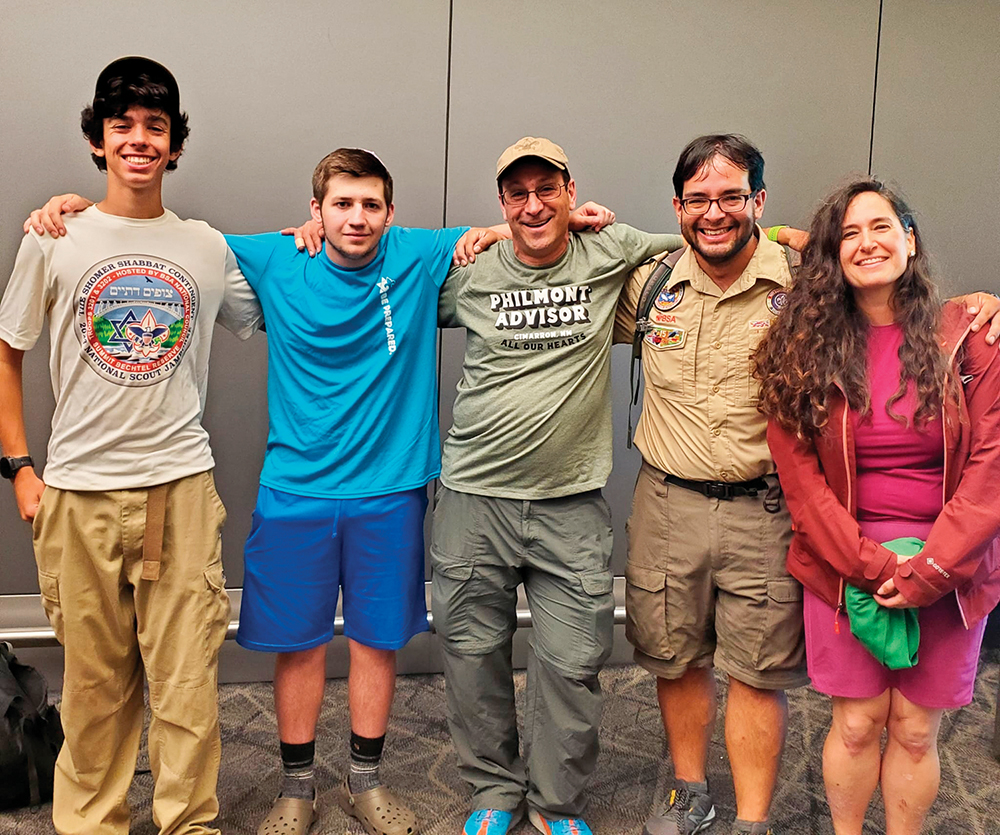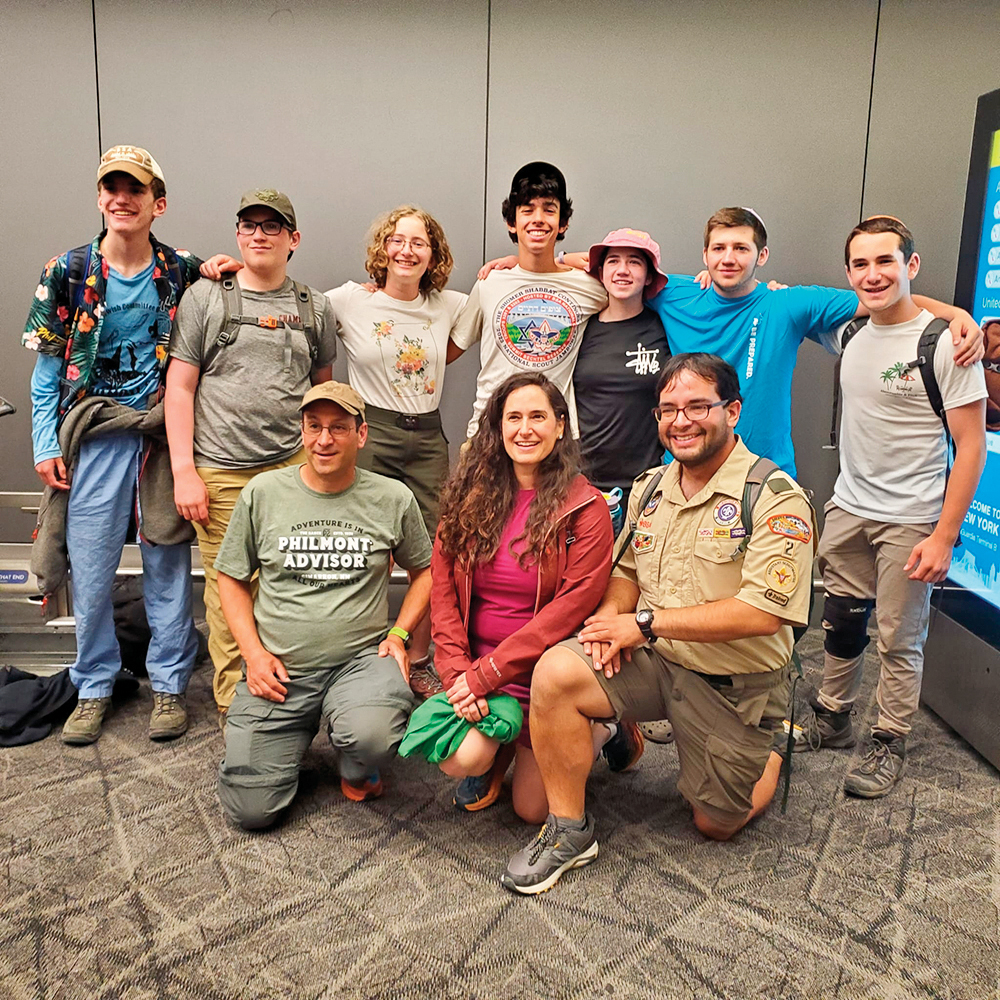
On Thursday, July 11, Southwest Airlines flight 2847 started out like any other flight. We were a group of 10 Jewish scouts returning home from Philmont Scout Ranch, after completing a 100+ mile high adventure backpacking trek over the previous two weeks. It had already been a long day for us, having traveled for just over five hours from Cimarron, New Mexico back to Denver for our flight home to LaGuardia Airport.
Midway through the flight, the flight attendants asked if there were any medical professionals on board the plane and to identify themselves by ringing their call button. Fortunately, there were two doctors and two nurse practitioners, one of them being part of our group of 10, sitting right next to me. They all immediately proceeded to the front of the plane. Thinking there were enough medical professionals to tend to what was going on, I simply looked down the aisle to see if I could figure out what was going on. Within a matter of two minutes, a call comes over the loudspeaker saying “Evan, get to the front of the plane!” Without really thinking about it, I ran to the front and saw a passenger on the floor in the first row.
As a scout leader, leading 14 youth scouts on a 100+ mile high adventure backpacking trek, we adults are all required to have specific medical training including CPR and Wilderness First Aid, for any injuries that can occur when in the backcountry. Our nurse knew this and needed more assistance with the passenger in cardiac arrest. I was told to immediately begin CPR, something I had trained for over many years, but never had to actually do. The training immediately kicked in and I began compressions, while the doctors were going through the onboard medical kit that all airlines are required to carry. It was fairly evident that the passenger was blue and cyanotic.
There were no fewer than four of us working on this passenger in a very tight space between the aisle and the exit door. The two nurses were working on bagging him (forcing air into his lungs), while the doctors were continuing with assessment and administering medication and starting an intravenous line to quickly get medication into him. We all knew what had to be done and worked well together, even though we didn’t know each other previously.
For those of you unaware, a person can only perform CPR for perhaps three to four minutes before tiring out since it is a very difficult thing to do. Thankfully, there was another passenger directly behind me who had offered to take over for me when I began to tire. Sensing that this was going to take a while, as soon as I ended CPR, I ran to the back of the plane and started directing my scouts to get to the front of the plane to form a CPR line since I knew who was already certified to do this. We implemented a rotating four person line to rotate each person every few minutes. Having no authority, but just taking initiative, I told everyone in the second row to move to the back of the plane so the passengers in the CPR line could remain close by at the ready.

CPR continued for well over 40 minutes and by this time, the airplane medical kit had nothing left that could be used. Still in danger, I once again ran up and down the plane and asked if anyone had any EpiPens. While Epinephrine is a medication often used to revive the heart, an EpiPen is a much smaller dosage for an allergic reaction, something very different than a heart attack. It was thought that there was no harm at this point, since we were out of any other options. I was able to get three EpiPens and immediately got them to the front of the plane. On final approach, all three EpiPens were administered in the passenger’s leg muscle.
As we were making an emergency landing in Pittsburgh, the flight attendant wanted us all seated and strapped in. One of the doctors, in a very gentle tone, said that if we did that, the patient would surely die. Compromising, we moved the patient to the floor in the first row where everyone could continue to work on him, while seated and leaning over, but not strapped in. That left two standing people and the flight attendant who could not sit because the passenger was in the way of her seat. I had the passengers create a crisscross with their arms across the aisle, holding the opposite side chair arms so that anyone in the aisle, as long as they were low, would be safe as the plane rapidly decelerated. It was a team effort by everyone involved.
Just before touchdown, a pulse was detected, no less than 45 minutes after CPR started. As soon as we arrived at the gate and the doors opened, emergency responders rushed in and took over from there. While I wouldn’t say he was stable, I can certainly say we did everything we could to give this passenger a chance; his heart was beating when he left the plane.
I failed to mention that immediately next to where we were working were five immediate members of his family occupying the remaining seats in the first row and they saw everything. They were most helpful in providing additional medical information on the passenger as we worked together.
With the passenger and family now departed, we first got a chance to relax from the adrenaline rush that we were working under. I proceeded to go up and own the plane and thank the passengers who gave us their EpiPens as well as provide an update. My simple statement was as follows: “We did what we needed to do and now he has a chance,” without really knowing what the outcome was.
On Friday, one of the doctors got an update from the family members aboard the plane. The text message read, “Thank you and everyone on the plane for what you did today. Words can’t describe how lucky we are that there were so many responders on the flight. He is currently stabilized and sedated.”
People often ask me what scouting is all about and my answer is always the same: To be prepared for what life throws our way. I am proud to say, our group faced a challenge and showed what they can do, even when faced with a tough situation.
There are Jewish scout groups in Teaneck, Highland Park, White Plains, West Hempstead and the Five Towns. If you are interested in finding out more about scouting, please email me at wp613scoutmaster@gmail.com.
Evan Gilder is the troop committee chair for Scouts BSA Pack, Troop and Crew 613, based in White Plains, New York.










